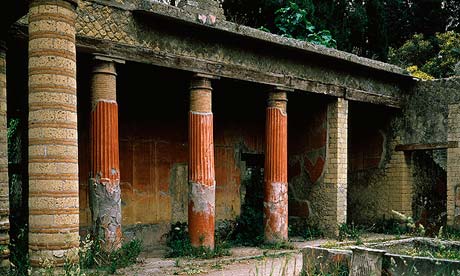Archaeologists have found something "interesting" and "perplexing" at a Roman dig in Alderney.
A team from the island, the UK and Guernsey are excavating land at the fort of the nunnery at Longy Common.
The dig is focusing on a gateway and wall but the team said they were "not expecting" the way it was laid out.
Dr Jason Monaghan said: "We've found something interesting,
but we don't actually know what it is until we take a bit more dirt
out."
Dr Monaghan, Director of Guernsey Museums, said the team had dug a trench to examine the gateway.
"It's a bit perplexing, the nunnery always throws little
surprises at us and the wall has changed below the ground level and we
weren't expecting that to happen so we need to know why it's changed,"
he said.













